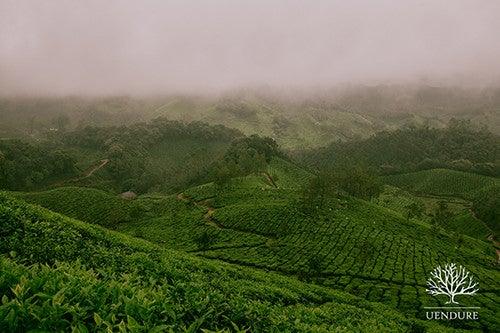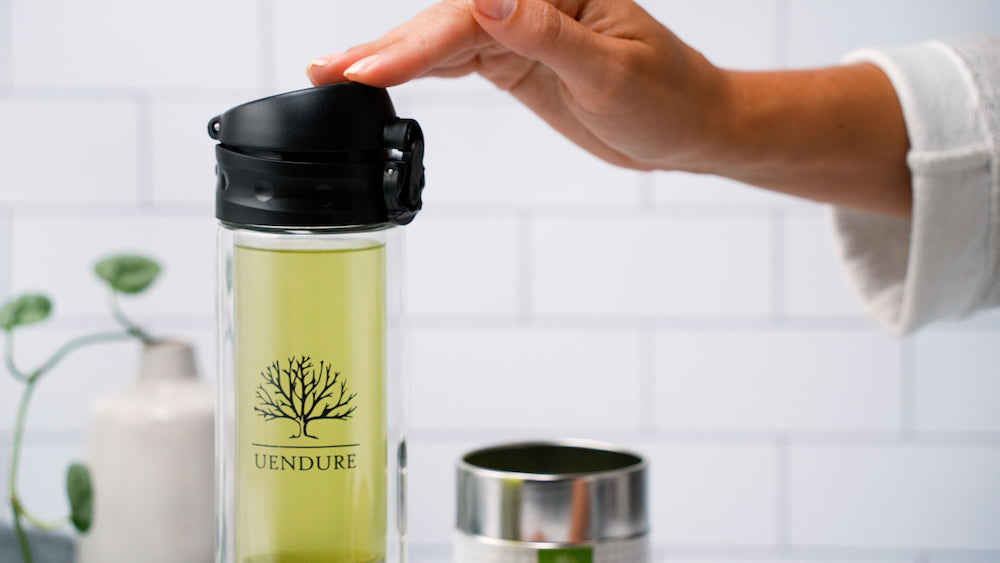Save 15% when you buy the Original Bottle Bundle!

Japanese Green Tea
There are thousands of varieties of green tea grown in different countries. Green tea was originally grown in China and brought to Japan by Buddhists monks. Now China, Japan, and India produce the bulk of what's sold. Japanese strains alone account for twenty different types of green tea, and every country and region’s tea tastes different.
Japanese tea tastes of fresh grass and has a bit of the ocean in it. Most are processed by machine (UEndure is harvested by hand), ensuring a consistent product. They change its flavor by roasting the leaves or adding things like rice kernels. Shizuoka, Kagoshima, and Uji provinces grow the most tea, though it is grown all over Japan.
Eight Basic Variations
Sencha and fukamushicha make up the bulk of green tea produced in Japan. Both have a slight sweetness with a touch of astringency. It is made from the first pick of the plant. The longer growers wait to pick the leaves, the more astringent they are. Sencha is high in vitamin C and there's even a variety (called mizudashi-sencha) that is made to steep in cold water.
Fukamushicha is also made with the first pick of the leaves, but is steamed two or three times longer. This makes the tea a darker green and the fragrance deeper. Kukicha comes from the stems and stalks that are discarded while making sencha or gyokuro. It has a clean taste and light fragrance.
Konacha is a dust served at served at sushi restaurants. There, it is called agari. It is made from rejected buds and dust left over from creating sencha and gyokuro. It has a strong green color ad robust flavor. Bancha is made from leaves that grow after the sencha leaves have been picked. They’re picked throughout the year. Each new batch becomes tougher, causing a more astringent flavor with less of an aroma. It contains fluoride and therefore may be good for the teeth.
Matcha, a green tea powder used in tea ceremonies. Leaves meant for matcha are grown in the shade of a reed screen. It can be sold as full leaves or as powder. When it is the full leaf, it is called tencha. When it's reduced to powder, only the leaf itself is dried and ground. The stems and stalks are removed. The lighter green the matcha is, the sweeter the taste. The darker it is, the more astringent.
Gyokuro has a sweet, mild flavor. It is made by covering the plants with a reed screen two to three weeks before picking the leaves. Hojicha is made by roasting sencha or bancha over high heat. It turns the leaves brown, making a tea that is almost honey colored. It contains very little caffeine.
Genmaicha is bancha, or sencha, combined with roasted brown rice. The rice adds a nutty taste to the slight sweetness already in the leaves.
Conclusion
Japanese teas have other names as well, mostly to do with what season they were picked in or where they were grown. For instance, Shizuoka, Kagoshima, and Uji, all have teas named after them. The above are basic variations. Even in those, the entire leaf is utilized, leaving nothing to go to waste.


